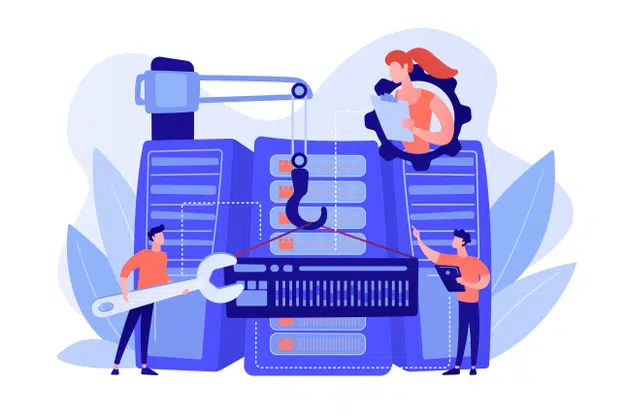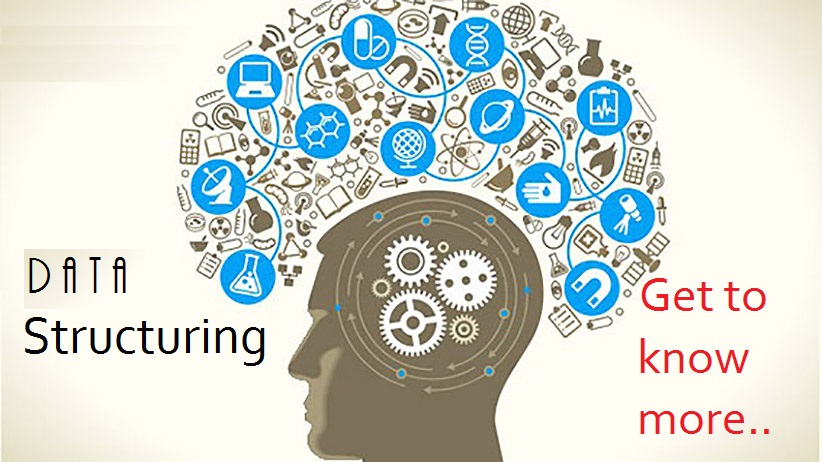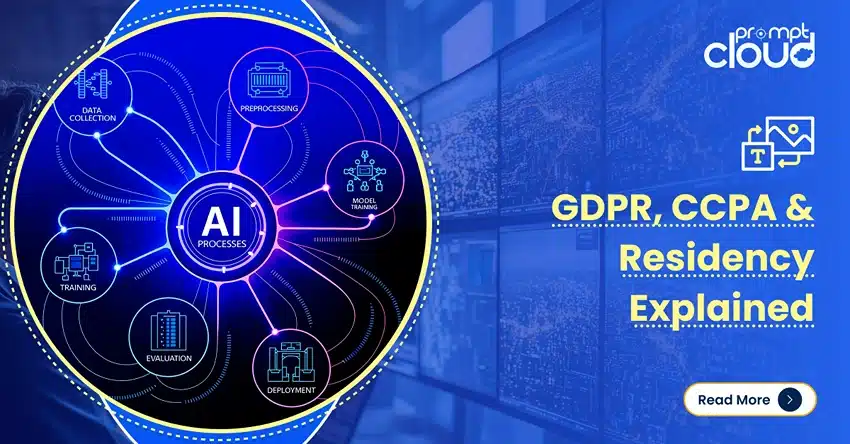
What is Data Structuring
The notion of data as we have long held has changed drastically over time and now is poised at a position that some might consider a marvel of technological advancements. The world today is more connected than it ever was. Millions of people generate heavy volumes of data on a regular basis. This data often termed Big Data, is what informs us today.
Businesses have long been trying to harness the irrefutable power and potential of Big Data. Companies have turned their attention to activities like data mining, and are even offering exclusively data-driven services. With the advent of these Data-as-a-Service companies and the consequent uses and potential of Big Data, it is worth taking a look at the exact nature of this voluminous pool of data. Dig deeper into what is data structuring and how can we employ it to put it to our specific uses.
Big Data– The Unstructured Data Pool
Big Data comprises large volumes of data that are generated daily all over the internet. In essence, it is a pool of unstructured data that must be made sense of first, to be fit for use. The idea, therefore, is to get unstructured information, process it according to requirements, and then store it into a data structure as structured data.
This is where the importance of structuring data comes in. There are many forms of data structures, ranging from basic to advanced and complex, and their use is essential in the data structuring process.
The effort here is to collect information through multiple means like data mining efforts or through bots that extract data from websites and then process that information. It is this processing that converts the unstructured data into structured, useful, and actionable information and insight that businesses can eventually use to formulate strategies and plans.
The Basics of Data Structuring
Data structuring techniques, in essence, have to do with a system where seemingly random, unstructured data can be taken as input and a number of operations executed on it linearly or non-linearly. These operations are meant to analyze the nature of the data and its importance in the larger scheme of things.
The system then divides the data into broad categories of information as found by the results of the analysis, and either stores them or sends them on for extra analysis. This extra analysis can be used to break down the data into further sub-categories or nested category trees. During the analysis, some of the data might also be found to be useless and eventually discarded.
The result of this process is structured, meaningful data that can be further analyzed or used directly to gain business insight. The journey from unstructured data to business insight is what the data structuring and processing cycle are all about. Its success often determines the success of the role of data in a particular organization.
Data Structures and Their Properties
A data structure is essentially a place where data can be stored in a structured form. Right from very basic structures like arrays which are commonly used in programming languages, data structures can nowadays take complex and intricate forms, and such are the forms that are usually called upon to work with Big Data.
Modern data structures are databases of different kinds that support a large array of extensive processing and operations, which really allow for easy manipulation, categorization, and sorting of the data in many different ways.
Relational databases are the preferred data structure for many people as they have been in vogue for many years, have a large support base, and are the backbone of many successes when it comes to data structuring. SQL databases have long been used to capture and manipulate data in a structured, useful manner. However, recently other alternatives such as NoSQL have started to emerge, making the structuring of data an even more interesting process, filled with possibilities and potential.
Algorithms
The process that immediately follows data collection through different means and initial storage and is the first step towards achieving true structuring of collected data is its analysis, classification, and categorization. This is achieved by the means of running the collected data in a steady stream through particular algorithms.
These algorithms try and match the data to known data types based on format, nature, content, and other important parameters; that can help provide disparate data streams with identity and character.
Algorithms are usually written based on the criteria of different companies and their usage requirements. Their purpose is to either partially or fully automate the process of data classification and categorization in order to save time and effort and to make it easier to sift through larger volumes of data without the need for extensive human intervention.
Once the algorithms have done their work, the data is then stored for further processing and analysis, which is the next step in data structuring.
Storage Options and Their Features
For many years, SQL databases have been the storage option of choice when it comes to structuring data with Big Data. This technology is dominant in its adoption and has provided the data structuring backbone for many companies around the world.
It is a standardized, uniform, interaction-based data structure with support for many popular data interchange formats and is incredibly versatile and feature-rich. The excellent advantages that SQL database brings to the table include:
- These databases allow for maximum interaction with the stored data at a basic level. This allows users to query a large set of possible questions against one single, integrated, and unified design of the database. This is a key point in its support because of the fact that without being interactive, there can be very little use for data. More interactions essentially mean the ability to ask new questions about the data you possess. It also means you are on the way to more meaningful and purposeful interactions in the future. Eventually, this forms the backbone for the process of finally turning data into insight.
- The system of SQL is a standardized system, allowing for maximum support and adoption without problems. Users can gain and apply their knowledge about this data structure across multiple systems and also benefit from the support for other third-party tools and add-ons that can only come from a standardized platform.
- SQL can be scaled according to requirements, and its versatility has been proven by decades of adoption. The platform has been known to be conducive to any requirement–right from deep analytics which is scan-intensive, to fast transactions that are write-oriented.
- The SQL architecture is essentially orthogonal to storage and data representation. Their support for popular structured object formats like XML or JSON is oftentimes a lot better than with other platforms, making it a powerful tool for data storage, integration, structuring, and manipulation.
Another new alternative that has recently captured the imagination of businesses for its possible application in the field of data structuring as it pertains to Big Data is the concept of NoSQL.
With a rapid increase in the variety and complexity of generated data, many are starting to realize that in some cases, a data model that is schema-less can sometimes be better for today’s requirements than relational databases. The appeal of NoSQL lies in the fact that it is particularly adapted to the scale of operations to which the Big Data processing of today must conform. NoSQL scores points on various fronts, including:
- In the world of databases, scaling is always a crucial factor, particularly more so at this time. NoSQL is the hallmark of the radical movement in the realm of databases from scaling up to scaling out. SQL databases can be scalable, but they are only capable of being scaled up–made more capable through the addition of more hardware, which can often be expensive. Unlike these, NoSQL systems are by nature capable of scaling out, being built of distributed clusters to which nodes can be added very fast, even on the fly. This is a more cost-effective scaling option.
- NoSQL architectures can also be great for immense flexibility, which is one of the prime requirements for the data structuring needs of today. These are non-relational and offer total flexibility of data models, resulting in efficient distribution and better read-write performance.
While data handling has come a long way, it can safely be said that there is still a lot to be achieved in the field of data structuring and data structuring tools, especially when it pertains to Big Data. We can all look forward to many more innovations in the near future, which keep changing the face of data structuring and taking things forward.





















